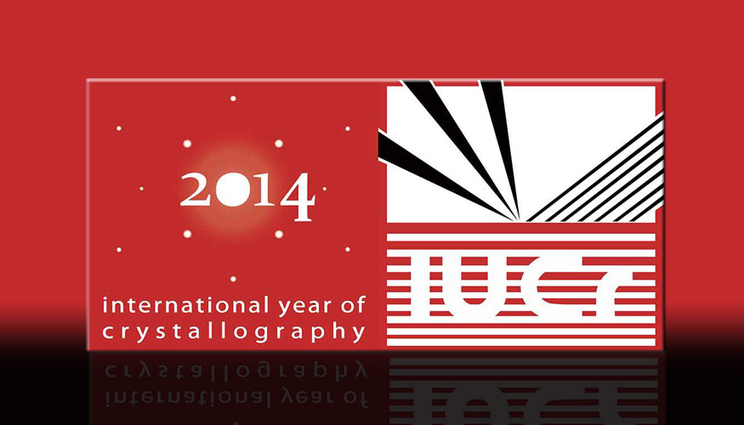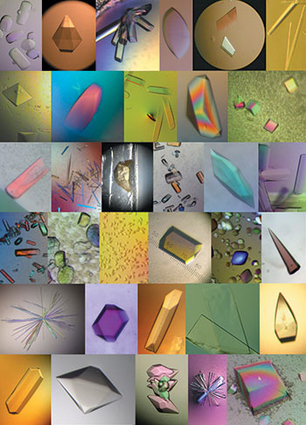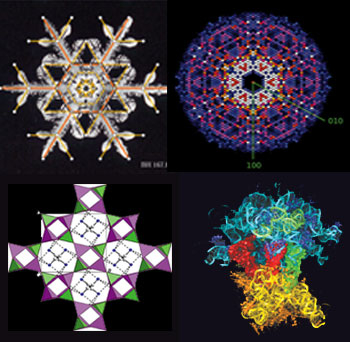Celebrating 2014 as the International Year of Crystallography
The pioneering work of Max von Laue, for which he was awarded the Nobel Prize in physics, was followed by a joint award, also in physics, the next year (1915) to the father and son team of William and Lawrence Bragg. Since then, more than 25 Nobel Prizes have been awarded in areas related to X-ray diffraction, such as crystallography, electron microscopy and topics that relate to the structure of matter and its properties.
The United Nations has proclaimed 2014 as the International Year of Crystallography (IYCr2014 ) as a way to commemorate not only the achievements of von Laue and the Braggs, but also to mark the 400th anniversary of Kepler's observation of symmetry in ice crystals, which sparked the wider study of the role of symmetry in matter.
Simply put, crystallography is the study of the basic building blocks of materials, chemical compounds and biological systems by looking at the internal arrangement of atoms or molecules.
The discovery of X-rays in the late 19th century completely transformed the old field of crystallography, which previously relied on classifying crystals based on their morphological appearance. The interaction of X-rays with crystals showed that X-rays are electromagnetic waves with a wavelength of about 10 -10 meters, and that the internal structure of crystals was spatially periodic and over long distances. Since then, crystallography has become a basic discipline of many branches of physical and biological sciences, such as physics and chemistry of condensed matter, materials science and metallurgy, planetary sciences and proteomics.
By correlating the structural knowledge obtained by crystallography to the properties of the material, it allows scientists to produce materials with predesigned properties, from a catalyst for a chemical reaction of industrial interest, to toothpaste, to in-vitro ceramic plates, to extremely hard materials used for surgical tools, to the steel frames in skyscrapers, or to aircraft components that are used in extreme environments.
Understanding the role of defects in crystal lattices and how they affect the deformation of metals has revolutionized the design of materials for the infrastructure taken for granted in the industrialized world. Scientists now know precisely what makes Damascus steel and samurai swords so highly prized.
Further, scientists specializing in crystallography discovered DNA secrets and the genetic code including increasing the resistance of plants against environmental damage; understanding, modifying or inhibiting enzymes involved in fundamental processes of life and important signaling mechanisms taking place inside of human cells, like cancer. With the structural knowledge of the ribosome, the largest factory of proteins in cells, new antibiotics can be developed and modified to improve the efficiency. From the structure of certain components of some viruses to fight bacteria that are highly resistant to antibiotics, crystallography allows researchers to unravel the subtle defense machinery that has been developed from these microorganisms, so that they can be fought off with alternative tools.
For Lawrence Livermore scientists, predicting the performance of advanced materials is essential to success in countless research programs in national security, lasers, energy and biotechnology. Crystallography crosses the borders of many disciplines at the Laboratory, and in this, diffraction and various kinds of microscopies play an integral role. In addition to using in-house capabilities such as various scanning and transmission electron microscopes and X-ray diffractometers, LLNL scientists conduct X-ray diffraction experiments at the Jupiter Laser Facility and NIF to study,in-situ, phase transformations and deformation behavior of materials under dynamic conditions.
LLNL researchers also extensively use the DOE Office of Science synchrotron X-ray user facilities such as the Advanced Photon Source (APS) at Argonne National Laboratory; the Advanced Light Source (ALS) at Lawrence Berkeley National Laboratory, and the Linac Coherent Light Source (LCLS) at SLAC National Acceleratory Laboratory. A new development is the Dynamic Compression Sector at APS, which is now entering its commissioning phase and will be available to the user community next year.
As 2014 marks the 100th anniversary of the field of crystallography, LLNL will feature stories on scientific research in different fields at LLNL that incorporate crystallography.
Contact
 Anne M. Stark
Anne M. Stark
[email protected]
(925) 422-9799
Related Links
New X-ray analysis method opens the door to researching an elusive class of proteinsFirst-ever determination of protein structure with X-ray laser
Groundbreaking Science With the World's Brightest X-rays
Graphite, a Quick-Change Artist
Tags
Physical and Life SciencesFeatured Articles










